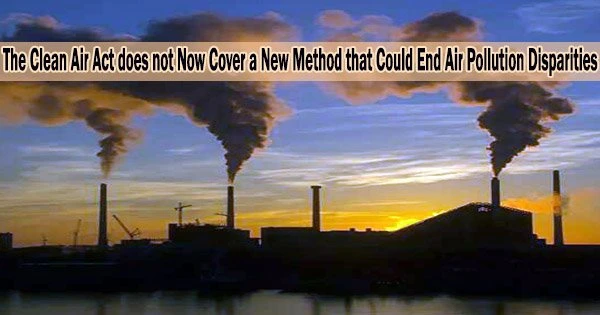People of color at every socioeconomic level in the United States continue to be subjected to higher than average amounts of air pollution, despite the fact that the quality of the air has significantly improved over the previous 50 years, in part because to the Clean Air Act.
Researchers at the University of Washington headed a team that sought to determine whether the Clean Air Act can help to close these gaps or if a new strategy is required.
In order to determine which strategy would be better at managing inequities throughout the contiguous United States, the team analyzed two techniques that reflect key elements of the Clean Air Act and a third option that is not frequently employed.
Each method, including limiting emissions in particular localities or requiring regions to conform to strict concentration guidelines, was modeled by the researchers using data on national emissions.
The community-specific method removed pollution inequalities and decreased pollution exposure overall, in contrast to the first two techniques based on the Clean Air Act that did not eradicate disparities.
The team published these findings Oct. 24 in the Proceedings of the National Academy of Sciences.
“In earlier research, we wanted to know which pollution sources were responsible for these disparities, but we found that nearly all sources lead to unequal exposures. So we thought, what’s it going to take? Here, we tried three approaches to see which would be the best for addressing these disparities,” said senior author Julian Marshall, a UW professor of civil and environmental engineering.
Our optimization models what happens if we maximize the reductions in disparities. If an approach cannot address disparities even when optimized to do so, then any real-world implementation of the approach will also not address disparities. But we saw that even with less than 1% of emission reductions targeting specific locations, the pollution disparities that have persisted for decades were reduced to zero.
Yuzhou Wang
“The two approaches that mirror aspects of the Clean Air Act were pretty weak at addressing disparities. The third approach, targeting emissions in specific locations, is not commonly done, but is something overburdened communities have been asking for for years.”
PM2.5, also known as fine particulate matter pollution, has a diameter of less than 2.5 micrometers, or roughly 3% of the width of human hair. Vehicle exhaust, fertilizer, other agricultural pollutants, fossil fuel energy generation, forest fires, and the burning of fuels like wood, oil, diesel, gasoline, and coal are all sources of PM2.5. They are thought to be the cause of about 90,000 fatalities annually in the United States and can cause heart attacks, strokes, lung cancer, and other illnesses.
Using a program called InMAP that Marshall and his co-authors created, the researchers put the three potential solutions to the test. InMAP simulates the chemistry and physics of PM2.5, including its formation in the atmosphere, its dissipation, and the movement of the particle from one place to another according to wind patterns.
Since 2014’s national emissions statistics were the most recent set of data accessible at the time of this work, the team used those data to model these methods.
The effectiveness and efficiency of each strategy in reducing overall pollution exposure on average as well as the elimination of inequities for individuals of color were examined by the researchers.
Despite being effective in lowering exposure on a national level across the country, the emission source and concentration regulations techniques did not resolve pollution inequities.
“Our optimization models what happens if we maximize the reductions in disparities. If an approach cannot address disparities even when optimized to do so, then any real-world implementation of the approach will also not address disparities,” said lead author Yuzhou Wang, a doctoral student in civil and environmental engineering. “But we saw that even with less than 1% of emission reductions targeting specific locations, the pollution disparities that have persisted for decades were reduced to zero.”
Additional work would be needed to determine which sites would be ideal to target and to engage with the local communities there to find how to minimize emissions before implementing this location-specific approach, the team said.
“Current regulations have improved average air pollution levels, but they have not addressed structural inequalities and often have ignored the voices and lived experiences of people in overburdened communities, including their requests to focus greater attention on sources impacting their communities,” Marshall said.
“These findings reflect historical experiences. Because of redlining and other racist urban planning from many decades ago, many pollution sources are more likely to be located in Black and brown communities. If we wish to address current inequalities, we need an approach that reflects and acknowledges this historical context.”
Additional co-authors are Joshua Apte and Cesunica Ivey, both at the University of California, Berkeley; Jason Hill at the University of Minnesota; Regan Patterson at the University of California, Los Angeles; Allen Robinson at Carnegie Mellon University; and Christopher Tessum at the University of Illinois Urbana-Champaign. This research was funded by the U.S. Environmental Protection Agency.





